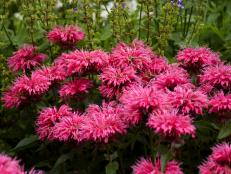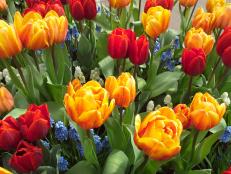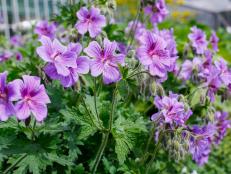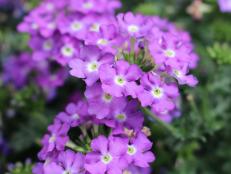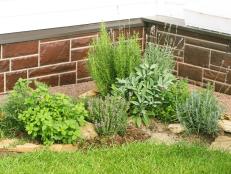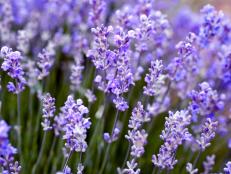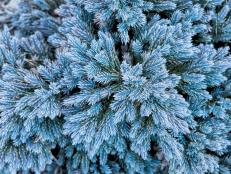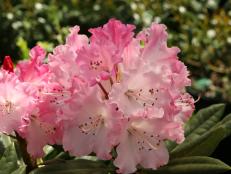How to Plant, Grow and Care for Hyacinth Flowers
Sweet-smelling hyacinths are a symbol of spring. Learn how to grow these iconic flowers.
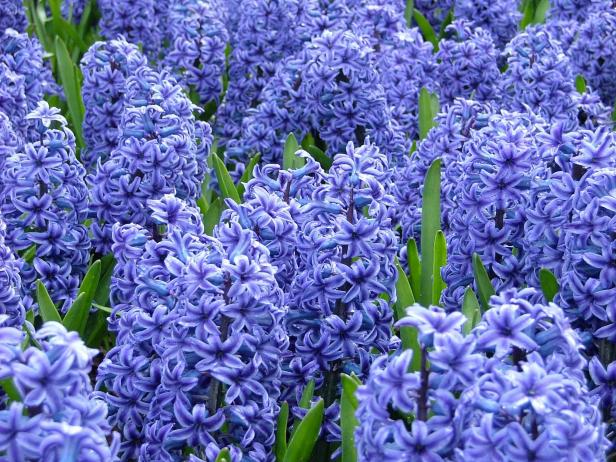
Photo courtesy of John Scheepers Flower Bulbs
'Blue Jacket' hyacinths

Hyacinths smell like spring. Their intense fragrance hangs in the air, signaling that winter's gone and spring has arrived. Like tulips and daffodils, hyacinths are an iconic spring flower.
Their showy spikes of blooms in shades of blue, purple, white, pink, apricot and red pop up at the end of winter when you're really excited to see flowers. Best of all, hyacinth blooms last for two weeks or more, longer than other spring bulbs.
Hyacinths are native to Turkey, Syria and Lebanon. Introduced to Europe in the 16th century, hyacinth became so popular that the Dutch — those lovers of bulb flowers — had bred more than 2,000 cultivars by the 18th century.
Hyacinths are perennials, so you can plant them once and they'll come back every spring. Hyacinths are easier to grow than other spring bulbs, and they can be forced indoors in pots or a bulb vase. Most hyacinths need a chill to bloom, so they do best in areas where winter temperatures are consistently in the 30s. If you live in an area with warmer winters, buy pre-chilled bulbs and treat them as annuals.
Grape Hyacinths vs. Hyacinths
Grape hyacinths (Muscari) are a different plant from true hyacinths (Hyacinthus). They're smaller, hardier, and native to Europe and Asia. Grape hyacinths belong to the same botanical family and require similar growing conditions as true hyacinths, so for this article we're calling both Muscari and Hyacinthus plants "hyacinths."
Botanical Name: Hyacinthus orientalis (true hyacinths) or Muscari armeniacum (grape hyacinths)
Common Name: Hyacinth
Bloom Time: Spring; at the end of winter
Hardiness Zones: 3 to 8
Planting Hyacinth
- Plant hyacinth bulbs in the late summer to early fall. Don't plant any later than about a month before the first frost. Your bulb needs time to establish itself before the coming of the cold.
- Choose a spot that gets at least four house of sun per day. Hyacinths do best in full to part sun.
- Make sure the soil is loose and loamy. Hyacinth bulbs tend to rot in heavy soils that hold a lot of moisture. If your soil is heavy, improve its drainage by mixing in compost, shredded pine bark, or aged manure.
Pro Tip: If you soil is heavy clay, plant hyacinth in raised beds to improve drainage. - Plant hyacinth bulbs at least 4 inches below the surface and 3 inches apart. Grape hyacinth bulbs should be planted 2 to 3 inches deep.
Pro Tip: Plant hyacinth bulbs in masses to maximize their sweet scent. - Set the bulb in the hole pointy end up. The pointy end is where the shoots of the plant will emerge in the spring. Plant the bulb upside down, and you'll get no hyacinths in the spring.
Cover with soil and water thoroughly. Although there are no signs of life above the ground, the bulb will begin sending out roots soon after you plant it. Water them only if rainfall is scarce. Too much moisture is death for hyacinths. - Fertilize the bulbs with bulb food after planting to help them get established and grow strong new roots.
Caring for Hyacinth
- Don't overwater. Excess water is the hyacinth's enemy and will cause rot. If you hit a drought spell, though, give them an inch of water per week.
- Fertilize them with bulb food in the spring when the leaves emerge and then again in the early fall.
- Add compost to the soil after they bloom. This will give them the nutrients to come back next year.
- Allow the leaves to stay on the plant for six weeks after they bloom. Those leaves make nutrients for the bulb to store for next year's flowers. Strip those leaves off as soon the tulip is done blooming, and you won't see another flower from that bulb.
- Cold isn't a problem unless your garden doesn't get any. If that's the case, dig up the bulbs after the foliage dies down in the spring, store bulbs in a dry, cool place all summer, refrigerate them for a couple of months and replant them in the fall.
How to Force a Hyacinth
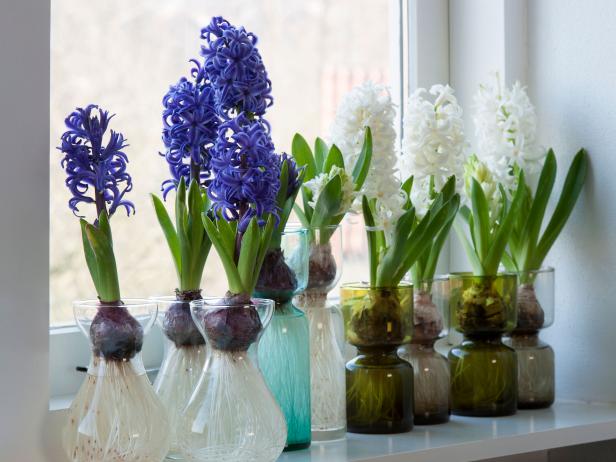
Wouter Koppen for iBulb.org
Beat the winter blues by forcing hyacinths in a vase.
You can trick (or force) a hyacinth bulb to bloom indoors, in the winter, when you really, really need a fragrant flower to boost your spirits. Here's how to do it:
WITH DIRT
- Plant the bulbs in a pot of soil with their tips just peeking out of the dirt. Don't plant them as deeply as you would outdoors. You're going for speed of bloom, not cold weather protection.
- Put the pot full of bulbs in a dark, cool place for at least 10 weeks. The bulbs need temperatures between 40 degrees and 45 degrees. The refrigerator works. Don't have room for a potful of bulbs in the fridge? Buy pre-chilled bulbs.
- When the bulbs have an inch-long shoot, bring them out of their dark, cool place. Put the pot in a sunny, warm spot for a few hours a day, gradually leaving them out longer and longer until they're accustomed to their new sunny digs.
- Water carefully. The soil should be moist, not wet.
- After they flower, you can transplant them to the garden. With proper care, they'll bloom again the following spring.
WITHOUT DIRT
- Get a bulb forcing vase.
- Fill with water.
- Place pre-chilled bulb, root down, into the vase so the bottom of the bulb is touching the water.
- Place the vase in a spot that gets bright, indirect light.
- Make sure the water level is at the base of the bulb.
- Change the water once every two weeks.
- Watch it grow!
Pests and Diseases
Hyacinths can be vulnerable to:
- Gray Mold (botrytis), a fungus caused by too much moisture. Infected plants will have white spots on leaves that turn gray and then brown, eventually covering the leaf and causing it to wilt. Eventually the whole plant will be covered by a fuzzy, gray growth. To control gray mold, remove infected plants and throw them in the trash. Spray remaining plants with a fungicide.
- Bulb Rot, caused by overwatering or poorly drained soil.
Recommended Hyacinth Varieties
'Carnegie' grows 12 inches tall and has snow-white flowers in early spring.
'China Pink' has pale pink blooms with streak of hot pink on the petals.
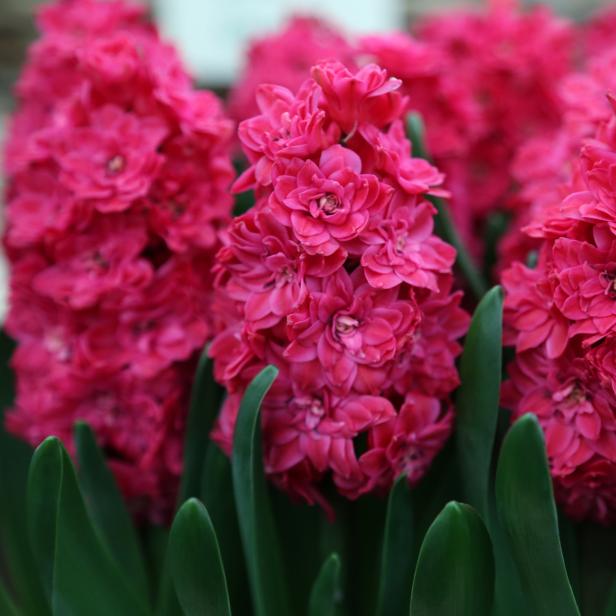
Image courtesy of Felicia Feaster
'Hollyhock' Hyacinth
'City of Haarlem' has soft yellow blooms.
'Hollyhock' has exceptional fragrance and double blooms in hot pink.
'Peter Stuyvesant' is an early spring bloomer with deep blue-purple flowers.
'Gypsy Queen' is an heirloom variety dating to 1927 that has salmon pink blooms.
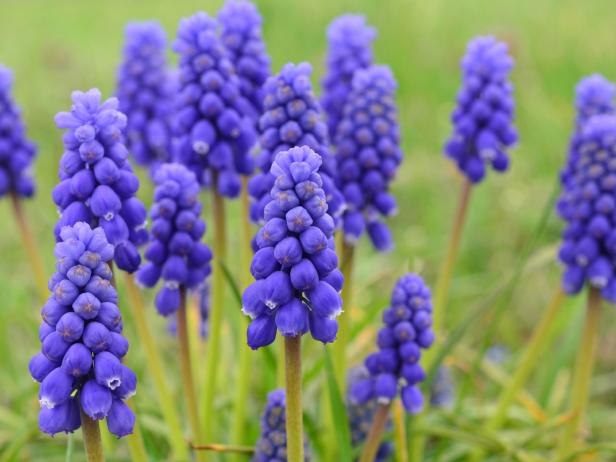
Aleksandar Milutinovic
'Viper Bow' is a type of grape hyacinth.
'Woodstock' has deep maroon flowers on 12-inch stems.
'Viper Bow' is a grape hyacinth (Muscari) that's a good choice for naturalizing. It has deep blue blooms on plants that are 4 to 6 inches tall.








